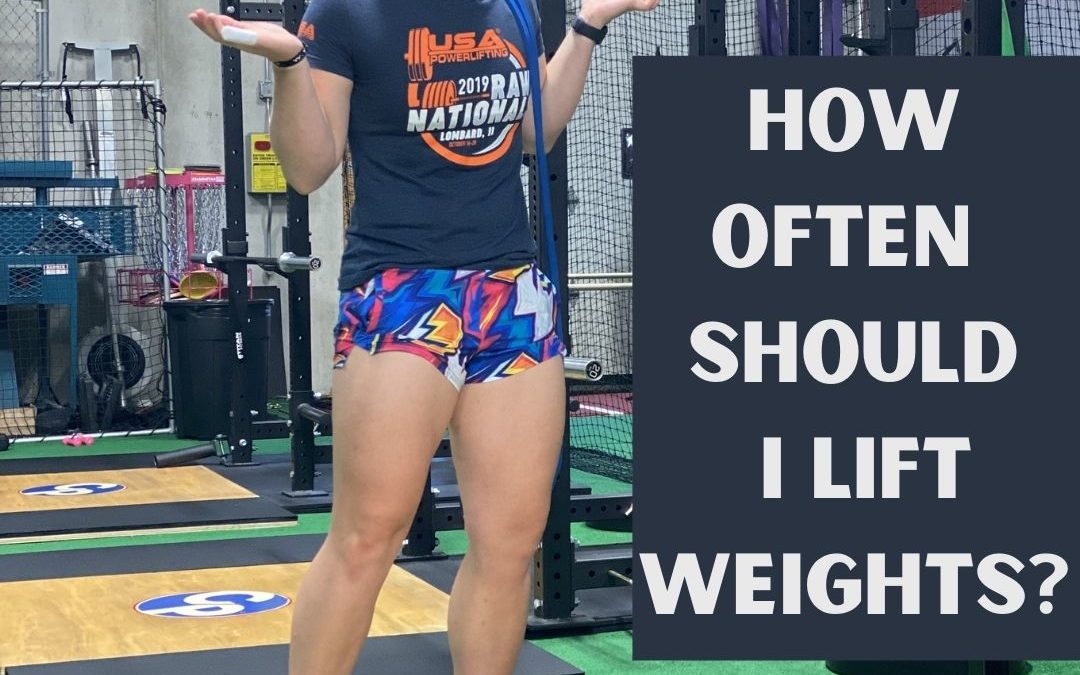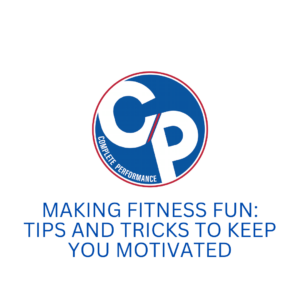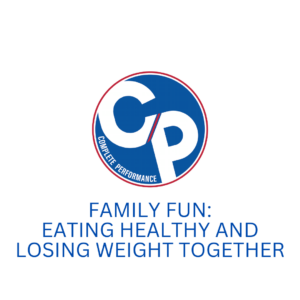Hey, did you know that the Center for Disease Control (CDC) recently published the second edition of the Physical Activity Guidelines for Americans?
Of course not!
The only thing we hear about in relation the CDC is COVID (come on, we have to joke a little).
In all honesty, I had no idea there was even a first edition, but isn’t it sad that in 2021, this is only the SECOND edition of physical activity guidelines?
Training and working out have been around for centuries!
Here’s where I have a big problem – they’re not that different from the first time around…
To save you a click or a trip, here’s what the guidelines say:

Soooooo, what does that mean?
Let’s dive into all things training frequency!
Why You Need to Consider Training Frequency
Results
That’s the biggest reason you’re doing this, right?
Whether your goal is to lose body fat, build muscle, compete in a sport, or get some mental/emotional relief, you’re looking to achieve something out of it!
You’re in it for results.
If you’re training with the wrong frequency, you’re going to miss out on results. You’re going to end up not stressing your system ENOUGH or (which is way more common than people think these days) you’re going to train TOO MUCH and over stress your system and not be able to supply the body with its needs to support change.
Now, before we move on, this does not mean that missing one training day or even a week completely sabotages results. That’s a topic for another day…
Adequate Recovery
Now, I get that you want results, and in your head that comes with more exercise and training, but another big reason as to why you need to look at training frequency is to promote adequate recovery.
If you’re just training nilly-willy and never taking into consideration how much you’re training, you’re going to end up over-trained.
When you follow a training program that already has your training and rest days set, you’re MUCH less likely to train too often.
On the other side of things (and this is very rare), if you’re not training often enough, you’re again going to miss out on results. The best way to describe this is that you’re going to be SO recovered, you’re going to completely recover and regress from the changes you sparked your body to make with too infrequent training.
Lifestyle
Last, but certainly not least…
IT MUST FIT INTO YOUR LIFESTYLE!
I’ve seen this WAY too many times, and it NEVER brings individuals to their results long-term.
Here’s are 2 examples:
- The teacher or student who is off for the summer with HOURS of time. The individual commits to 5 to 6 training sessions per week in hope of achieving all of their desired results in the summer. Once the school year starts back up, the individual quits because there’s teaching, after school programs, family and social commitments, and everything else that comes with life. The individual regresses on all progress and winds up in the same spot next summer.
- The Resolutioner looking to REALLY jumpstart to start the year. This individual is SO desperate for change and results because they claim to be ALL IN this time, so they WAY over commit on training. Shortly into the new year (let’s be honest, February at the latest), they realize this isn’t sustainable with everything else they’re trying to juggle in life, so they quit and swear they’ll start again next year…
So, which one are you…
Training Programs for Ideal Frequency
Upper-Lower Split
This training style separates training into 2 upper and 2 lower body training days with 2 to 3 days of active recovery, cardio, or rest.
Pros:
- Isolates upper and lower body to allow for even more recovery time and an improvement in the mind-muscle connection.
- Allows you reach your minimum volume threshold more effectively and easily to encourage muscle building.
- Meets the research-backed suggestion of optimal training frequency per muscle to be 2 times per week.
- It easily fits people’s schedules and allows for a good amount of flexibility around one’s schedule.
Cons:
- Difficult for individuals with a schedule that’s constantly changing.
- Can be too much for someone who’s lifestyle does not allow for 4 training days, thus preventing you from reaching the minimum volume threshold for certain muscle groups.
Full Body Programs
This training style does NOT separate upper and lower body, but trains the entire body in 1 training session.
Pros:
- Very enjoyable for clients as it allows you to feel that burn literally throughout every muscle of your body.
- It’s great for improving your metabolic capability as hitting every muscle group increases your heart rate and keeps you at a higher caloric burn throughout the workout.
- Meets the minimum volume threshold and the recommendations of optimal training frequency.
- It’s the MOST adjustable seeing as you’re able to flex your number of training days to fit your lifestyle while also limiting the volume to prevent overtraining.
Cons:
- It requires a lot of creativity and experience in programming to guarantee you’re not missing certain muscle groups and overtraining others (AKA I recommend you work with a coach to set a program like this up).
- It’s harder to achieve the mind-muscle connection as you bounce back and forth from upper and lower body exercises.
Upper-Lower-Push-Pull-Legs
This advanced training program is definitely one of my favorites. It can be run across a 1- or 2-week cycle to vary the intensity, load, volume, and recovery on each muscle group.
Pros:
- There is little doubt as to whether or not you’ll get enough volume!
- One of the best programs to encourage a focus on the mind-muscle connection for better results.
- Meets the minimum volume threshold and the recommendations of optimal training frequency.
- It changes the way muscles are targeted and trained to keep you physically and mentally fresh for each training session.
Cons:
- It’s an advanced program that requires a lot of gym time. Yes, you can utilize this program over a 2-week span, but it does come at a cost when it comes to results.
- Too much volume for beginners and can really compromise form and joint health.
Hey, don’t forget to check out next week’s blog to find out whether or not you’re at risk for training TOO much.
About The Author
Jordan Davies is the Co-Owner of Complete Performance. Jordan has her B.S. in Exercise Science and Psychology, and her M.A. in Holistic Health Studies. She is a CSCS certified strength and conditioning coach, and a PN-1 and NCI-1 certified nutrition coach. She loves to study how the human body needs to be moved and nourished and making that fit to your unique lifestyle. Click Here Now to Apply for Coaching with Jordan.




